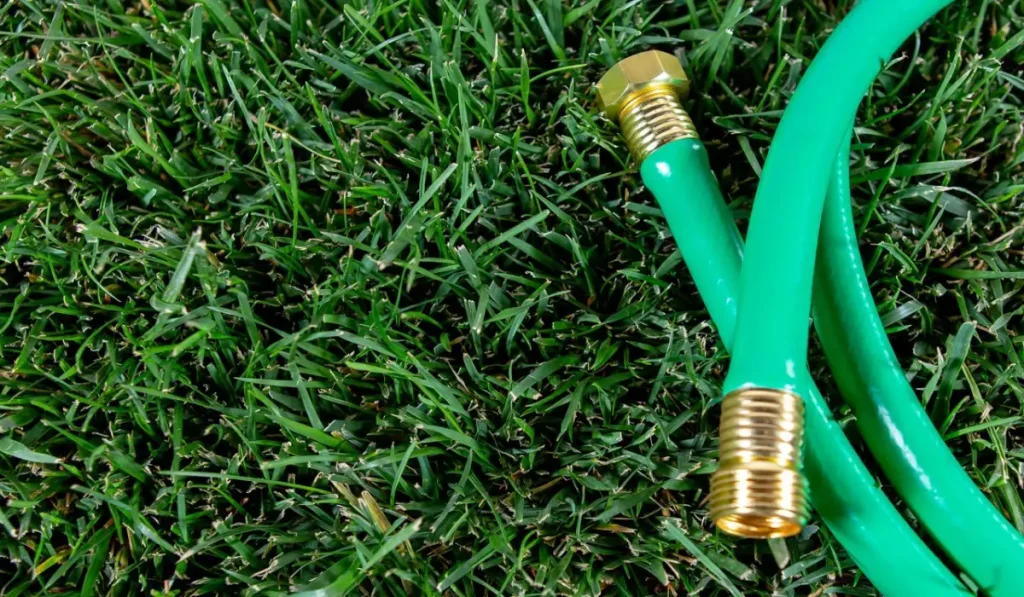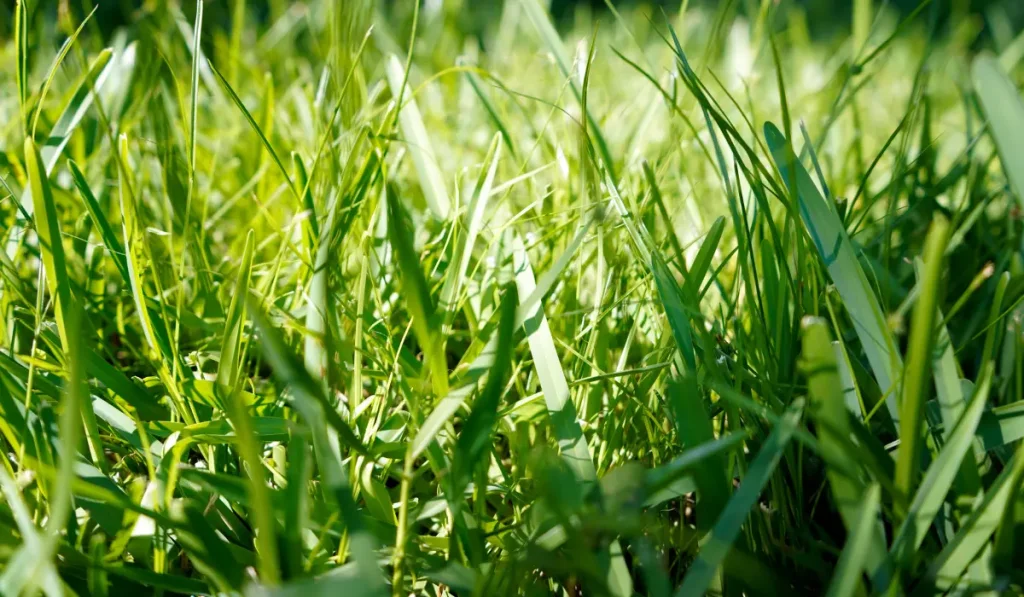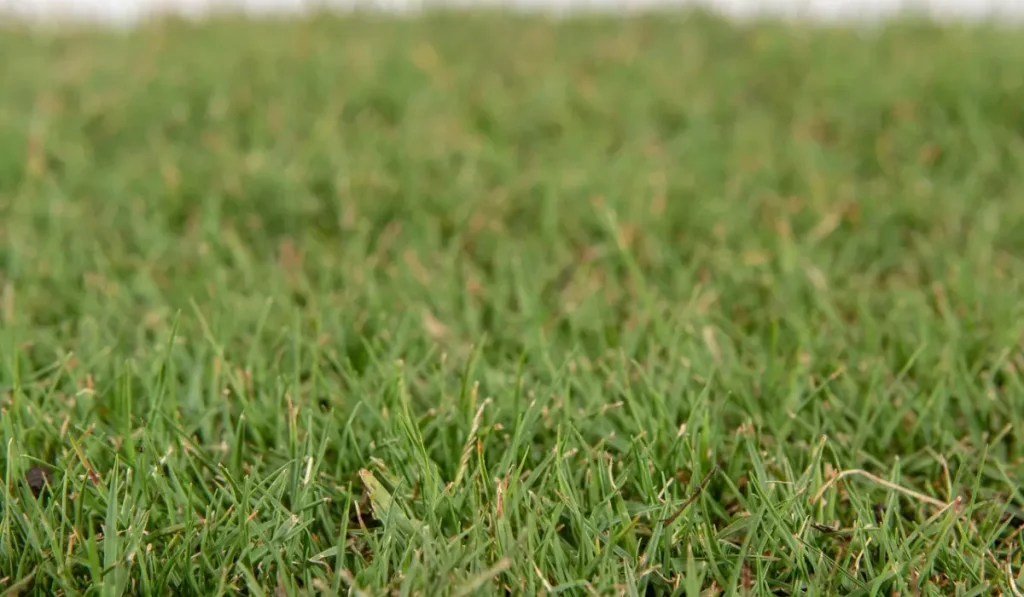In southern California, warm-season grasses tend to be most common. The weather here can get dry with periods of drought lasting for weeks at a time. On the plus side, our winters tend to be mild.
With higher-than-average temperatures and plenty of sun exposure (one of the perks of living here!), you are going to need grass types that can handle the heat and dry conditions.
Of course, if you want your lawn to be more than just a pretty face (you want to be able to use it, too), then choosing a grass type with good wear tolerance is essential.
Without further ado, here are some of the best grass types for southern California.
Best Grasses by Category
Selecting the right type of grass is crucial when it comes to establishing a new lawn. It doesn’t matter how vigilant you are when it comes to watering, weeding, fertilizing––If you don’t choose the right grass type, your efforts will be in vain.
Here in Southern California, there are a few all-star standouts that come to mind.
Most Popular Grass In Southern California: Fescue Bluegrass Blend

| Color | Drought Tolerance | Disease Resistance | Shade Tolerance | Wear Recovery |
|---|---|---|---|---|
| Dark green | 9/10 | 10/10 | 2/10 | 8/10 |
Marathon Grass and Elite Plus are the two most popular versions of this grass in Southern California. Fescue Bluegrass Blend is made of a variety of grasses that are compatible with southern California’s unique soil and climates.
It is naturally dark green and grows well in the region. It requires less water and is more tolerant of high heat and has a medium to coarse texture.
Mowing: Depending on the specific type of Fescue Bluegrass Blend grass you grow, you’ll usually need to mow to a height of 1.5 to 3 ½”.
Water Needs: A good rule of thumb is to water your lawn every other day or less, depending on the weather. If your soil is sandy, you will probably need to water more during the summer months.
Fertilizer Needs: Fertilize about one month after installing sod and then once every month during the fall, winter, and spring (avoid fertilizing in July and August). If the lawn loses some of its dark green color, that’s a sign that fertilizer is needed.
Disease Control: Several types of fungal pathogens can affect Fescue Bluegrass Blend. They thrive in moist, warm environments, so changing the irrigation schedule is the most effective method of disease control.
Insect Control: Watch for pests like chinch bugs, cutworms, and sod webworms. Control starts with irrigation. Adjust your watering and use pesticides if necessary. Weed Control: Control weeds with a post-emergent herbicide.
Best Drought Tolerant Grass In Southern California: St. Augustine Grass

| Color | Drought Tolerance | Disease Resistance | Shade Tolerance | Wear Recovery |
|---|---|---|---|---|
| Dark green | 10/10 | 7/10 | 9/10 | 8/10 |
Although it doesn’t remain green during the winter months, St. Augustine does tend to keep its color well in Southern California, where the winters are more on the mild side.
This coarse-textured grass grows well even in dappled shade. It’s a popular choice for homeowners because it can handle a moderate amount of traffic and thrives in coastal areas.
Mowing: Mow at a height of 2 to 3” at all times. Don’t mow too short, as this reduces some shade to the turf.
Water Needs: This grass type needs about one inch of water per week during the growing season, though sandy soils will need more.
Fertilizer Needs: Use an all-purpose fertilizer that provides one pound of nitrogen for every 1,000 square feet, fertilizing once every two months.
Disease Control: St. Augustine is susceptible to a few types of fungal diseases, including brown patches. It is a summer disease triggered by warm temperatures and excess humidity.
Insect Control: When growing St. Augustine grass, the biggest pest concern you’ll have is the chinch bug. Of all grass types, St. Augustine is their favorite. The damage looks a lot like the effects of drought but fortunately, chinch bugs can be treated with pesticides. Weed Control: Avoid using post-emergent herbicides once your grass starts to green up, as St. Augustine is sensitive to chemicals while it’s growing. Instead, use a pre-emergent herbicide early in the year (mid-February is usually a good time to do this).
Best Grass For Wear Recovery: TifTuf Bermuda

| Color | Drought Tolerance | Disease Resistance | Shade Tolerance | Wear Recovery |
|---|---|---|---|---|
| Dark blue to green | 10/10 | 9/10 | 4/10 | 10/10 |
Of course, it’s also a great choice for residential properties as well! There are several types of Bermuda grass you can grow, including TifTuf, Tifway, and Tifgreen. This warm-season turfgrass, no matter the type you choose, tolerates traffic well. Because of this, it is frequently used in parks, athletic fields, golf courses, and more.
Mowing: This grass type should be mowed about once a week during the growing season. Mow to no less than ⅜” and no more than 2” in height and avoid mowing more than a third of the blade at once. This will ensure optimal growth and protect the grass from damage.
Water Needs: In the first two to three weeks of its growth, you should water frequently, keeping the soil moist to a depth of three inches or so.
This can vary depending on where you live and where, exactly, on your property the grass is located (for example, lawns that are located on the coast typically require less water than those more inland).
Fertilizer Needs: This low-maintenance grass thrives when fertilized every four to eight weeks during the growing season. Use an all-purpose fertilizer. A good indicator that your lawn needs to be fertilized is when the blades become pale green in color.
Disease Control: Another reason why Bermuda grass is so popular is that it is resistant to most common lawn diseases. If you notice brown spots on your grass, this can be a sign of disease but also evidence of a watering problem. Try adjusting your watering before treating any disease.
Insect Control: Bermuda grass won’t invite many pests when cared for properly, but you should keep an eye out for pests like white grubs. These pests live in the soil and are the larval form of many types of beetles.
Weed Control: You can prevent weeds from sprouting up among your Bermuda grass by keeping it lush and thick. Overseeding each year or as needed can be helpful to prevent bald spots where weeds might proliferate. You can also use pre-emergent and post-emergent herbicides, which are most effective when used while weeds are small.
Need Sod in Southern California?
Get the lawn of your dreams today
See which sod varieties are available in your area and get pricing.
See whats available. Get an instant Quote
We service almost all of Southern California, including:
Sod Los Angeles
Sod San Diego
Sod Bakersfield
Sod Long Beach
Sod Anaheim
Sod Riverside
Sod Santa Ana
Sod Chula Vista
And much more!



